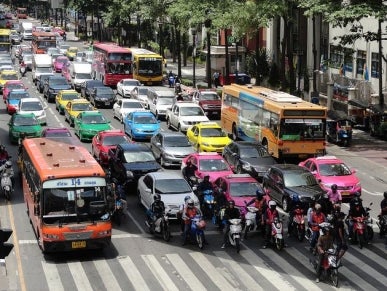One of the goals of EDF’s Ecosystems work is to provide farmers with revenue opportunities in reducing their greenhouse gas (GHG) footprint. Under AB32, California’s landmark legislation aimed at reducing GHG emissions, regulated entities may purchase carbon offsets to meet up to 8% of their obligations. Over the past six years, EDF has worked closely with growers to capitalize on the anticipated demand for these offsets, by developing protocols that will allow landowners to generate and sell agricultural offsets. On March 28, we reach a milestone in these efforts: the California Air Resources Board will host a workshop to begin a rulemaking process to consider the adoption of an offset protocol EDF has developed with the American Carbon Registry, crediting rice producers for GHG abatement practices.
We’ve put a great deal of work into understanding and piloting a myriad of rice farming techniques, while studying their implications for GHG emissions. A major conclusion from our analysis is that there exists a subset of viable alternative practices for rice producers in California with potential agronomic, economic and environmental benefits. The ones we’ve decided to focus on for our offset protocol are: baling, dry seeding, and early drainage of fields before harvest.
Agricultural activities account for an estimated 12% of global GHG emissions – the majority of these arise from sources of nitrous oxide and methane gases, composing ~60% and ~50% of the global total, respectively (as of IPCC AR4). Rice cultivation accounts for 5-20% of worldwide methane emissions; much of it is emitted as a byproduct of organic decomposition under flooded paddies. California’s goal to reduce its emissions to 1990 levels by 2020 through its cap-and-trade program (AB32) provides an opportunity for rice farmers to help the state meet its reduction goal.
There are multiple approaches for rice farmers to reduce GHG emissions. Some of these practices can be carried out before the harvest and others post-harvest. We’ve carried out some in-depth analysis on the various options, to better understand the incentives and revenue possibilities we will be encouraging through our policy work – we have found that there are a handful of ways that farmers can reduce GHG emissions while maintaining yields, earning some revenue for their efforts, and potentially save on costs in some circumstances.
Our analysis builds on a prior study by our partners Applied Geosolutions, UC Davis and the California Rice Commission that estimates GHG emissions and yields for the majority of rice producing acreage in the state. They use the DeNitrification-DeComposition (DNDC) model, simulating 6,316 rice fields for 16 farming practices. In our analysis, we first estimate the potential greenhouse gas abatement of a suite of specific practices: dry seeding the rice fields, baling harvest residue, and hydroperiod adjustments (draining of fields in midseason, before harvest and/or reducing winter flooding).
We then tabulate the cost of each management practice through a combination of literature, farmer and farm advisor consultation and combine these with abatement estimates to generate marginal abatement cost curves for each practice. Our preliminary results indicate a wide variability in abatement costs, depending on farming conditions. Of course, this is before factoring in the role of a carbon credit.
Unfortunately, not all of the practices we’ve studied are tenable in the Californian setting. One practice (midseason drainage of the fields) is accompanied with a significant decrease in yield and therefore does not lend itself well to the Sacramento Valley climate. In the case of stopping winter flooding, there could be negative habitat impacts for waterfowl that use this ecosystem as a feeding ground. Striving to understand such risks has been crucial in determining the extent to which producers will consider the new incentives created through the market.
Because the practices listed above have not been widely adopted, they are key opportunities for the generation of offsets. To better understand adoption rates, EDF is conducting further research in determining the quantitative and qualitative barriers that are limiting farmers from adopting such farming methods.
California will be one of the first rice producing regions in the U.S. to present abatement opportunities in conjunction with a carbon market. Combining economic principles such as abatement cost curves with biogeochemical models (e.g. DNDC) is useful in studying such opportunities. Further, the ability to simulate practices at the field level is central to understanding the economic potential of offset protocols granting agricultural producers access to carbon markets. In turn, this can create new incentives to abate GHG emissions from agriculture while potentially providing new sources of revenue to landowners – potentially a win-win situation.
We are excited that Thursday’s California Air Resources Board workshop will kick off the rulemaking process and that farmers can soon benefit from these interesting prospects.










